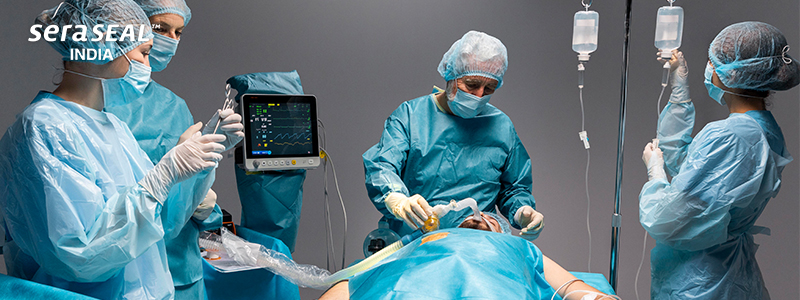Worldwide, 234 million approximate major surgical procedures are performed annually, as stated in the Journal of Surgical Research.
Surgical procedures are associated with the risk of various complications that can affect the patient’s health and increase the health care costs and hospital stay. These complications may include infections, extensive blood loss (blood transfusion), etc.
According to the Journal of Surgical Research, approximately 40% of in-hospital complications are related to surgical procedures. In addition, the risk of complications is 2-5 times more in surgery than in generic medicines.
A study conducted and recorded in the Journal of Surgical Research evidently states that “Surgical or operative duration is an independent and potentially modifiable risk factor for complications.” Therefore, a positive association between the surgical duration and complications like surgical site infection (SSI), venous thromboembolism (VTE), bleeding or hemorrhages, hematoma formation, and necrosis can be helpful for a successful surgery.
These complications lead to worsened clinical status, the emotional and financial burden for the patients and families, and additional healthcare costs. In addition, reduced surgical time would help decision making, planning, and management of surgical proceeds more effectively.
Prolonged operative duration would be associated with a greater risk of developing complications across surgical specialties:
Colorectal surgery
According to the Journal of Surgical Research, the risk of complications ranges from 2.4% to 16.3%. Common complications included bleeding or hemorrhages, sepsis, SSI, bowel obstruction, wound infection, and intra-abdominal abscess.
Urological surgery
The risk of complications calculated assessing urological surgery (i.e., typically nephrectomy, cystectomy, or adrenalectomy was between 1.1% to 57% Postoperative complications were bleeding wounds, hemorrhages, cardiac, neurologic, and respiratory complications.
Neurological surgery
The risk of complications observed in a neurological surgery ranged from 1.5% to 27.4%. Common complications included post craniotomy meningitis, extracranial infection, pulmonary embolism, pneumonia, cranial bleeding, or hemorrhage.
Gynecological surgery
Statistically, approximately 25% of women have a pelvic floor disorder, and 1 in 5 (20%) will have surgery, such as hysterectomy, ovariectomy, dilatation, curettage (D& C), polypectomy, and more. Complications may include bleeding, infection, thromboembolism, and visceral damage.
The one common complication in these extensive surgeries is the risk of bleeding or hemorrhage and the extension of surgical time due to blood transfusion. But if the bleeding were stopped in seconds, that would save the trouble of hemorrhages and impact the surgical time.
Brought to India by Swasth Kare, SeraSeal™ is the world’s first and only primary hemostatic agent that stops bleeding in seconds.
Benefits of SeraSeal™ How it helps reduce the surgical time?
Longer surgical time is associated with an increase in the risk of complications. Considering the aftermath of the difficulties, reducing surgical time must be the top priority for surgeons and hospitals.
SeraSeal™ can reduce surgical time by as much as 50% in some cases and blood transfusion by upto 90%, resulting in substantial cost savings. In addition, SeraSeal™ has multiple delivery systems. A syringe can deliver it, spray, foam, scope, trochar, catheter, trauma dressing, battlefield dressing, surgical sponges, dental compresses, swab, etc., and bandage strip. These delivery systems substantially expand the hemostatic market to include hospitals, ER/trauma centers, medical and surgical ICUs/clinics, private practice, dentistry, veterinarian medicine, paramedics, military, law enforcement, and over-the-counter products are first-aid for the home, business, recreational and sporting events. The time to arrest the bleed is in minutes, compared to seconds with SeraSeal™. The efficacy of the competitor products and having a single delivery system limit them in many surgical applications.
How will Seraseal™ impact the operating rooms in clinical settings?
SeraSeal™ can reduce surgical time by 50%, eliminate blood transfusion by 90% in upto 40% surgical procedures, and reduce anesthetic and pain medication. Efforts to reduce health care costs are actively pursued worldwide by government health care agencies, private hospitals, medical and surgical clinics, and insurance companies. In addition, other cost savings are available.
Contact us to know more!




